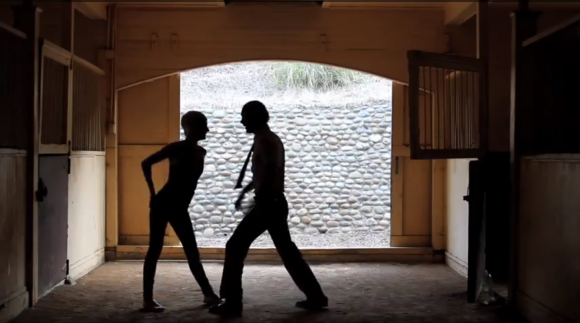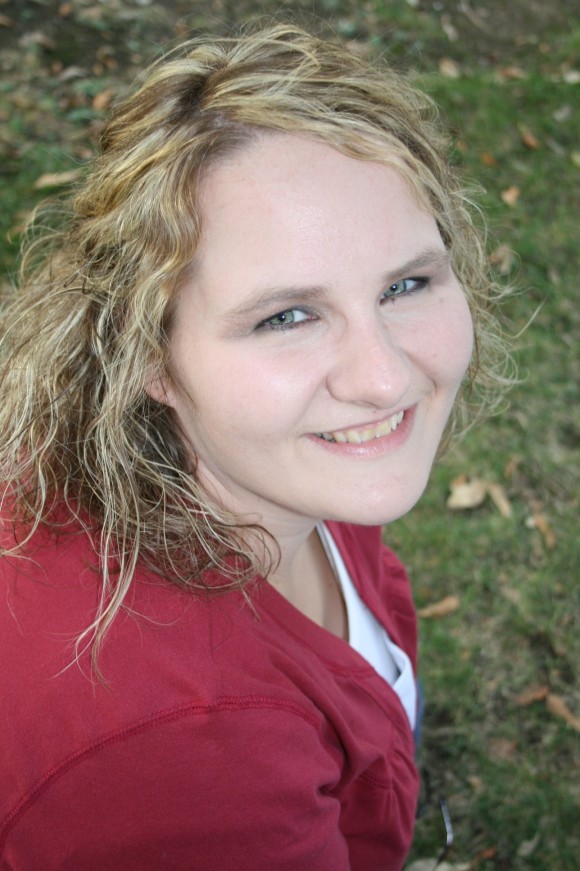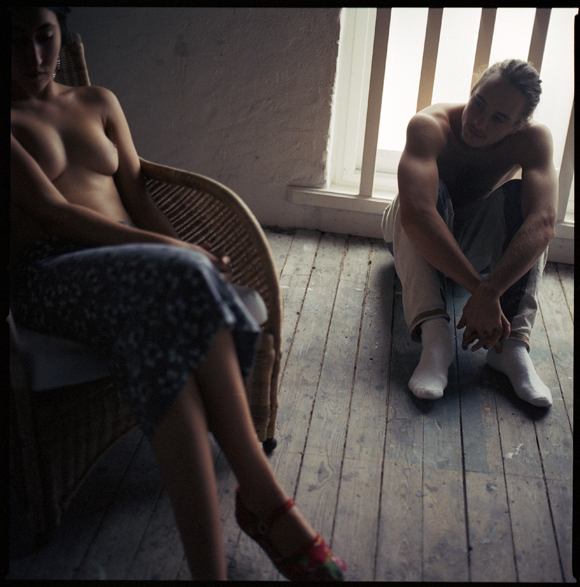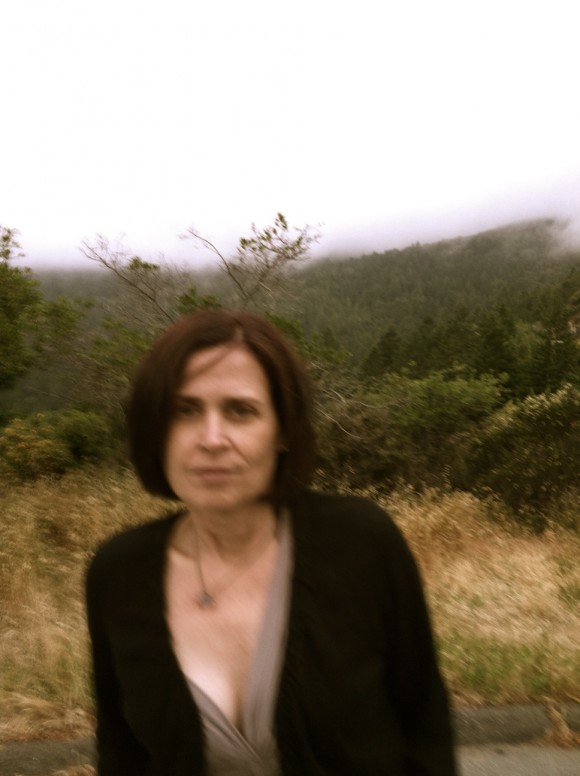{Image by Walter Green, excerpted from the story “Golem” appearing in Annalemma Issue Eight: Creation}
Out of the blue, I got an email from Walter Green earlier this year requesting to work with Annalemma. I clicked over to his site to check out his work and immediately recognized some of the images. His work has made an impact as of late in our world of literary small press publishing, most notably at The Rumpus, McSweeneys (where he works as a designer) and the new food quarterly, Lucky Peach. I dig the overall vibe of enthusiasm, delight and unpretentious excitement permeating Walter’s work.
I had a chance to speak with Walter over Gchat about his work, where he gleans inspiration from and the perils of working in an office with x-acto knives and water coolers.
Annalemma: So how’s your day going? Can you talk about what you’re working on?
Walter Green: Sure, my day’s going well! I’m a designer at Mcsweeney’s publishing in San Francisco, and there are a lot of little branches that go along with that and a lot of different hats to wear, etc. So today, I’m working on designs for a few of our magazine/quarterly type projects, mainly this thing called Lucky Peach, which is our new food quarterly with David Chang. Besides that, I do interior design of books, book covers sometimes, book ads, press releases, and lots of little things. But today, mostly editorial design for this food magazine. Also, I am the DJ.
A: That’s amazing. So how’d you land this job?
WG: Well, I interned there a while ago, and never really did a lot of design stuff. I had the desire to do design but no experience really. So I did some things for free for my friend’s bands or their business ideas and what have you, and kind of amassed a little portfolio. Then I moved to New York for a while and helped out at a small but fertile design studio and made my portfolio a little stronger. And when I eventually moved back to San Francisco, I started doing some freelance design and that seemed to work out okay for us all. So after a while they asked me to be a junior designer and I quickly said yes!
A: That’s rad, I have to say I’m really jealous.
WG: Well, it’s fun but often really tough and exhausting.
A: About five years ago I was obsessed with McSweeneys.
WG: Then what happened!
A: I started getting more and more involved with the publishing world, started digging deeper, seeing what was out there, seeing all the presses that were doing cool stuff. I still love what y’all do, but my focus is spread out so far now.
WG: Sure, of course!
A: I thought McSweeneys was the only game in town worth a shit, for a long time.
WG: How long has Annalemma been going on for?
A: We’ve been putting stuff out for four years. But I always looked to McSweeneys for design inspiration, so when I heard you were a designer there I was immediately curious about what that’s like.
WG: Well, it’s fun and exhausting as I said. It’s a two-person design team, essentially. There’s me (I think I’ve dropped the junior from my title now) and an amazing art director named Brian Mcmullen. So we do the bulk of the work, with other people helping out when they need to. Everyone here has some idea of how to work indesign/photoshop/what-have-you.
A: I’ve always been blown away by the ambition and scope of the design work. Where does the driving force come from to make things look so good?
WG: Well, I can’t say for sure for everybody else here. We’ve never sat down and had a real conversation about why we make things look the way we look. Why not put some effort in to make something look good if you can? I guess you could also say that we like to make our things look the way they do in hopes that people will buy them, read them, keep them, etc.
Also, just on a personal level, I think we’re all very interested in trying out new things and new ways to present content, just to keep things fun for us. By the way, the design of your magazine is incredible. The clarity of design is really inspiring. KUDOS, is all!
A: Thanks man, I wish I could take credit for that, it’s all my designer Jen O’Malley, she’s really talented. She comes up with a lot of the ideas, I’m more of the philosophy guy in the background trying to make sure that nothing looks like it’s a part of disposable culture, trying to make it something that people will want to keep around for a long time.
But enough about me, how long have you been drawing?
WG: Since I was a small child, I guess. Though there are always long periods of inactivity–even today–when I don’t draw for the longest time and end up sort of completely forgetting how it’s supposed to be done.
Yeah, it’s tough to talk about drawing. I’m not very good at it, but it’s somehow become a part of what I do, just because I’m so interested in it. I wish I could be the kind of person where my brain and my hand are totally connected and I can draw whatever I can imagine. But it’s probably just not in the cards for me, so in my illustrations that I work on today, I don’t rely on the regular stuff that actual talented artists use. I’m kind of just grabbing whatever is around and throwing it all together and hoping that something sticks I’d say I’m more of a DESIGNER-ILLUSTRATOR than a straight-up-drawing-dude.
A: I like how you incorporate your drawings into your design work though. I’m cruising around on your site here and all your work at first glance just looks like it’s a lot of fun. Like fun to read, fun to work on.
WG: Yeah, I guess being even slightly talented at illustration is a huge boon to the kind of design work that I want to do, so I’m able to fill in holes where necessary in my design and it’s good to not have to rely on an illustrator.
A: What are some design resources that pump you up? What are the daily places you go to that are doing good work?
WG: Hey, hold on a second!!! “BRB”
A: k
WG: SORRY! people are looking for x-acto knives.
A: No problem.
WG: I like to visit that site 50watts.com for a lot of incredible vintage/classic/bizarre/whatever design work. I like to visit the sites of other designers I like. but mostly I like going into Dog Eared Books near my office here and obnoxiously browsing their covers! And a lot of inspiration comes from the people I worked with/have worked with/the work they’ve done.
A: Who are the designers you’re a fan of?
WG: I’ll forget people but some of my favorites are: Paul Sahre, Leanne Shapton, Rodrigo Corral, Paul Buckley, John Gall, and the aforementioned Brian McMullen.
There are a lot more who have sites that I’ll check out, but it probably means something that those are the first names I think of when asked about designers I like.
A: Yeah, first impulses are usually the best. Like I was saying before, I’m really digging the work on your site cause it all looks fun, how do you maintain that attitude? My designer and I can work on something for days and weeks and sometimes it can be hard to keep fresh eyes about it. I guess I’m asking what drives you, what do you want the audience to feel most of the time?
{pause}
WG: Hey sorry I was absent, I was changing the water cooler
A: Sounds busy there today : )
WG: I guess as a designer/illustrator I am going on a project-by-project basis. Some things that are, you know, more light-hearted and fun can be appropriate for some silly colorful hand-lettering, while other projects call for a more serious illustration/type treatment/design treatment/what- have-you.
Mostly, I’m hoping that the design can reflect the content in some way. That’s when it comes to editorial design/cover design/illustration and stuff. As for, how to maintain a happy and fun feeling while designing, I’m not sure that it’s possible all the time.
There’s definitely a large part of what you were saying earlier in what I do, where I’ll start a project and think it’s the greatest thing in the world. You know, ten weeks later, it’s hell. And I hate the whole thing, and I still have to carry on the fun feeling.
A: Haha, yeah when the excitement wears off.
WG: Yeah, definitely. But, I guess I’m lucky in that the littlest things are able to bring me design-excitement, something as simple as just changing one color to a design I’m “tired” of can make me love the project all over again, sometimes. And it’s also good that at my job, I have a wide range of things I can work on, so I can put projects down, and pick them up later and my hatred for them has died down.
A: Haha
WG: And I start to remember them fondly. And even miss them a little bit.
A: I hear that, I keep trying to do that, look at things from a different perspective in order to see it in a new way. I do that a lot with writing, like a story might not be working at all and it’s complete shit in my mind but something will click, like I need to change the perspective from third to first and everything will come together. I love it when those breakthroughs happen.
WG: Yeah, of course, little things like that that bring a clarity to the whole thing and can sort of show you the light at the end of the tunnel are the greatest.
A: So what’s the next release we should look out for? What’s good on the McSweeneys roster?
WG: Welp, I’ve been doing a little more editorial illustration work for a few different clients and that’s been fun. I do a weekly illustrated column for the bay citizen (a nice journalistic website focusing on the bay area) where I review different events that happen. So tomorrow I’ll be going to some sort of yard sale and then drawing the people I see there.
Beyond that, I’m mostly focusing on this food quarterly thing here that is shaping up to be great. This is the second issue, so we’re gonna be able to tighten up everything a bit from the slightly loose style we established in the first issue. And that’s fun because I’m able to do hand-lettering, or type design, or chalk drawings, or vector illustrations–just whatever the articles call for.
A: That’s cool.
WG: Yeah, beyond that, I’m not sure if I’m allowed to give the secret scoop on whatever stuff Mcsweeney’s is doing. But I can say that whatever it is, we’ll be trying to make it look nice!
A: Awesome, well, I can’t wait to see it whatever it is. Thanks for talking to me, Walter.
WG: Hey thanks for thanks for letting me do some work for your recent issue! I loved that story.
A: I’ll get that mag out to you soon, I spilled a big cup of water on a stack of personalized thank-you letters to contributors I was sending out with mags and I’ve been putting off rewriting them so I think that’s why you haven’t got yours yet.
WG: Gotta hate those big cups of water! No worriez!
A: Cool man, well thanks again and I’ll be in touch.
WG: NICE! Talk to you later bud! We’re CHAT-PALS NOW!
A: Haha, indeed we are, talk to you soon.
Click here to check out Walter’s work appearing in Annalemma Issue Eight: Creation.














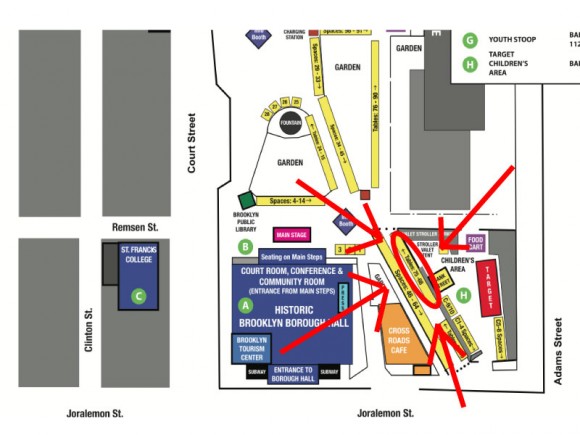
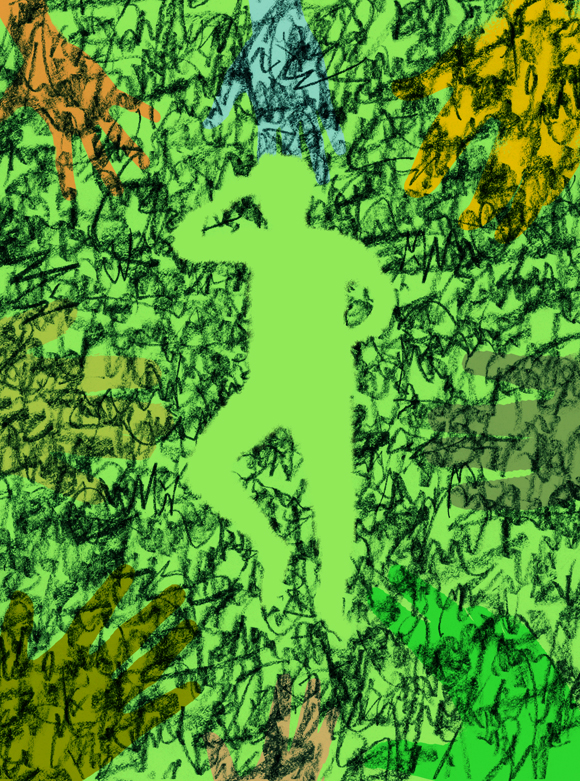
 Does your writing ever come into contention with your faith like that or do you get judged for those sorts of things?
Does your writing ever come into contention with your faith like that or do you get judged for those sorts of things?


